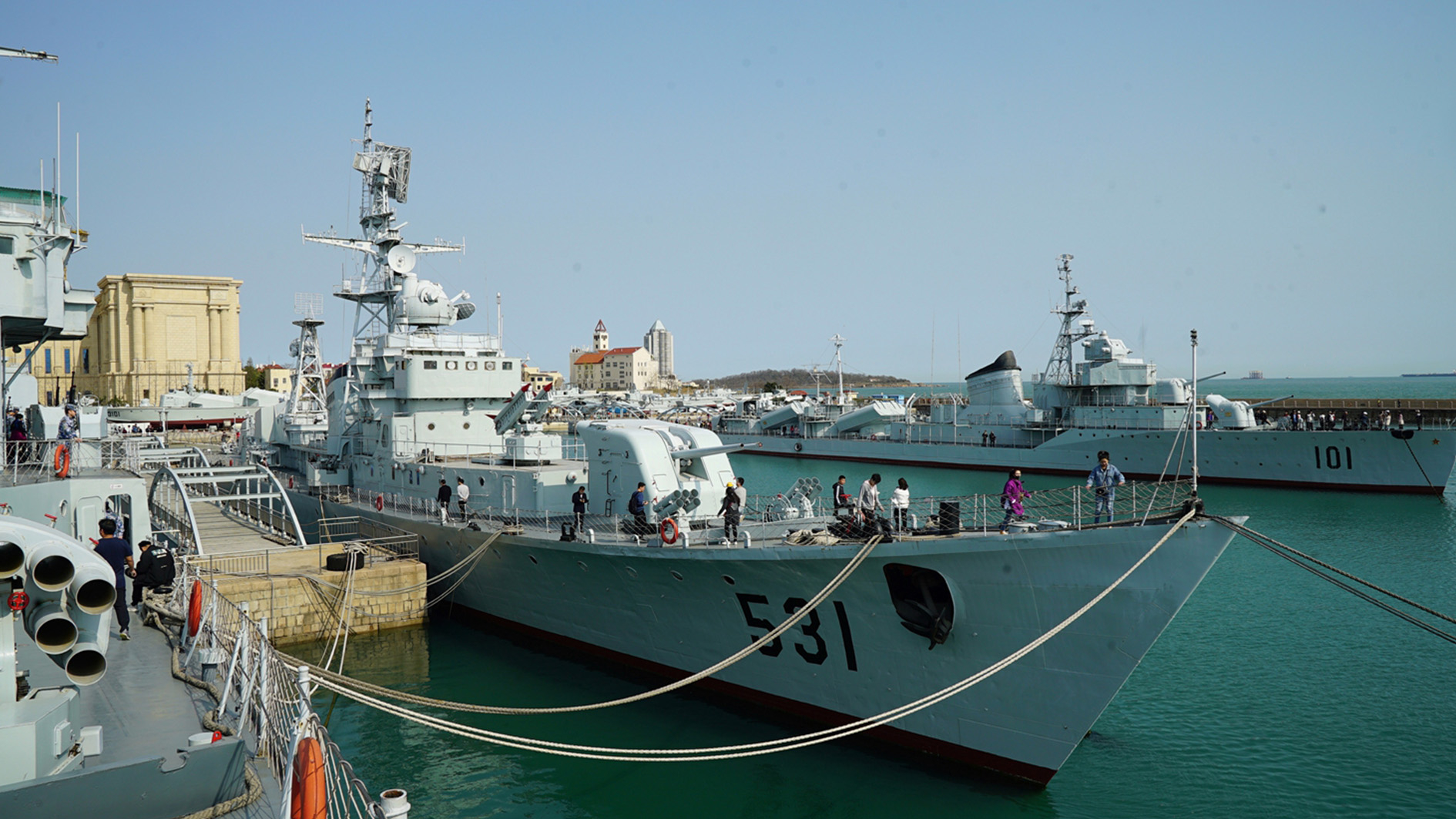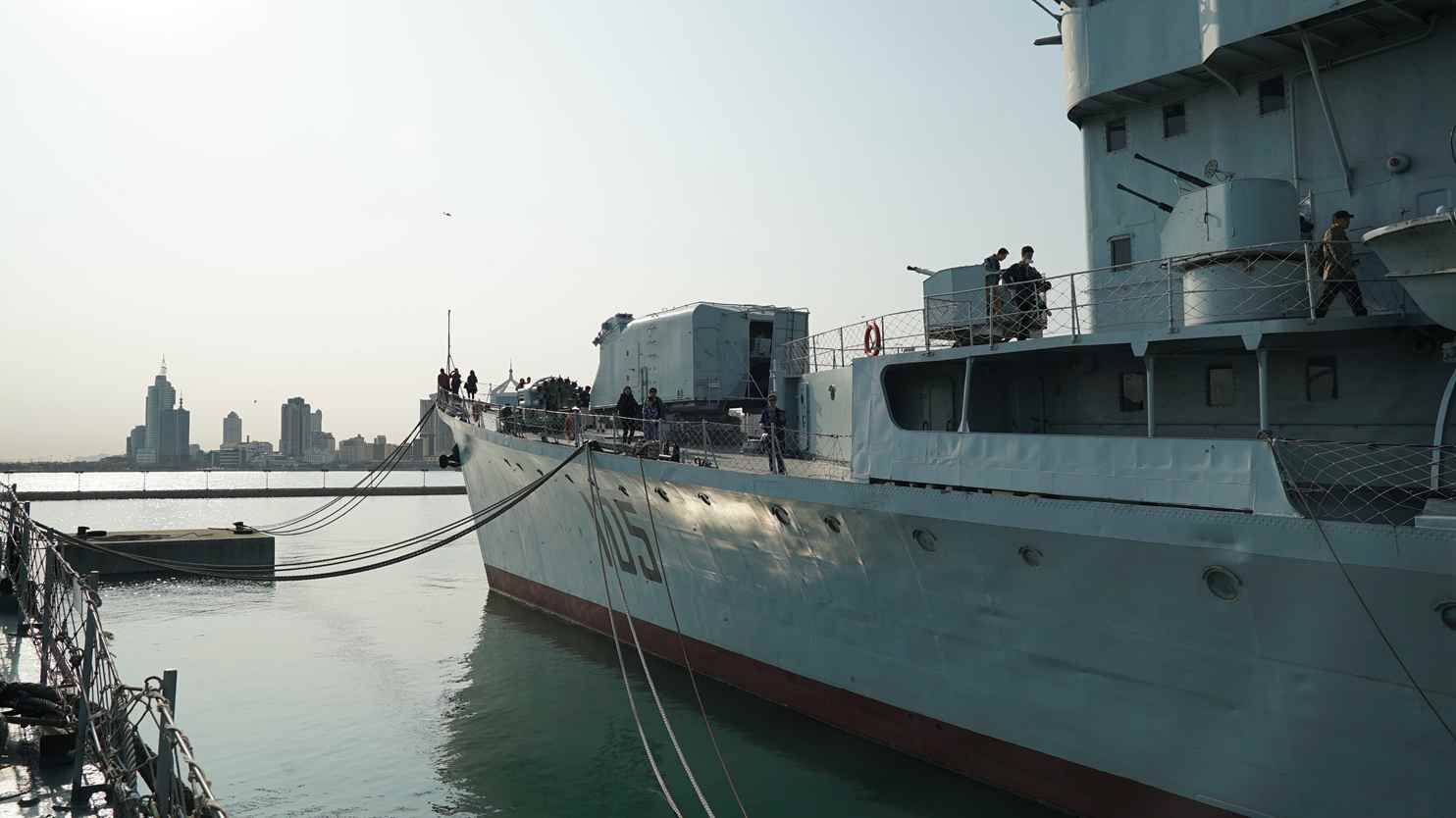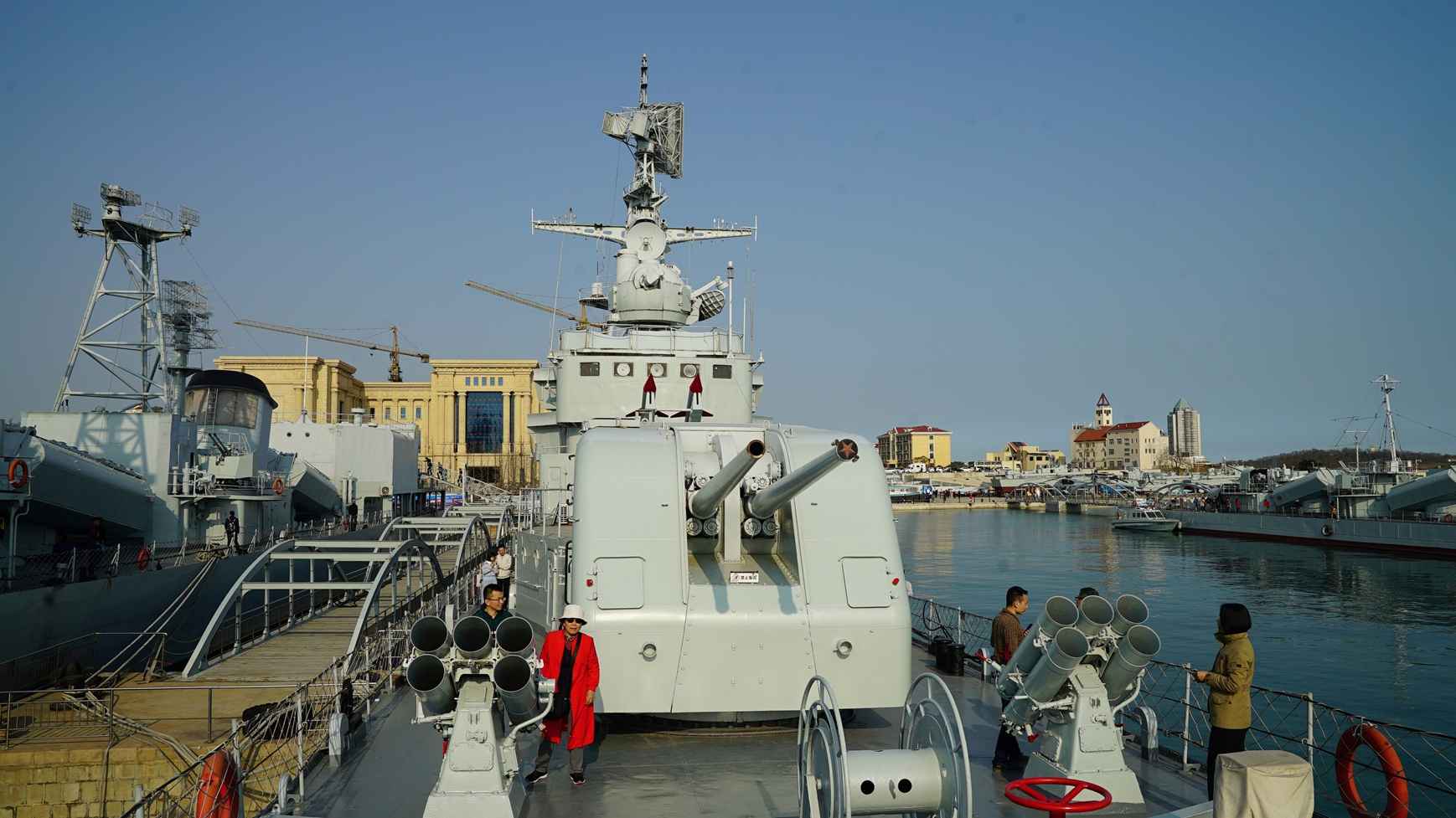
Culture China
23:07, 20-Apr-2019
Chinese Navy Museum showcases PLA’s very first vessels
By Zheng Yibing
01:38

China's biggest Navy Museum is located in Qingdao, eastern China's Shandong Province. It draws over a million visitors each year for an exhibition of the very first naval vessels of the People's Liberation Army (PLA).
The first vessels include the PLA's first nuclear-powered submarine named the "Long March One.”

China's first nuclear-powered submarine “Long March One” is on display in a museum after retirement. /CGTN photo
China's first nuclear-powered submarine “Long March One” is on display in a museum after retirement. /CGTN photo
The other two are China's first self-manufactured guided missile destroyer the “Jinan” and the frigate “Yingtan,” which has fought bravely in the South China Sea.
Wang Yanpeng, a naval expert said that these reflect the history of the PLA Navy since it was established 70 years ago. They went through a hard time, from small to big and from weak to strong.

China's first self-manufactured guided missile destroyer “Jinan” was an important vessel for the naval experiment. /CGTN photo
China's first self-manufactured guided missile destroyer “Jinan” was an important vessel for the naval experiment. /CGTN photo
These very first vessels are the legacies of the PLA Navy, as it developed itself into a powerful force to defend its nation and maintain regional and world peace.
With its defensive nature, the Chinese navy is now capable of coastal defense, as well as blue-water peace-keeping missions in places as far away as Yemen.

The frigate “Yingtan” fought bravely in the South China Sea in 1988 and is kept forever in the China Navy Museum. /CGTN photo
The frigate “Yingtan” fought bravely in the South China Sea in 1988 and is kept forever in the China Navy Museum. /CGTN photo
To celebrate its achievements, visitors come to the museum each year to gain an understanding of the difficulties the PLA Navy has faced and an idea about the missions it will undertake in the days to come.

SITEMAP
Copyright © 2018 CGTN. Beijing ICP prepared NO.16065310-3
Copyright © 2018 CGTN. Beijing ICP prepared NO.16065310-3